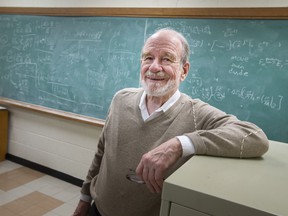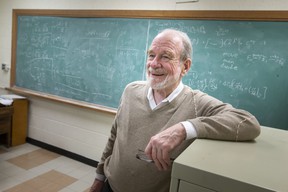
Article content
University of Windsor researchers hope to use laser light to see something that has so far remained invisible: dark matter.
Advertisement 2
Article content
Physicists at the school teamed up with a group of international scientists, devising a new way to change laser colors in order to glimpse certain atoms they could not previously see.
Their experiments afforded them new ways to interact with the atoms, opening a range of possibilities for future research.
Dr. Gordon Drake, a University of Windsor physics professor, started working on this theory around eight years ago with some fellow international scientists.
“We had both the theory and experimental side,” he said. “They were fitting together.
“We realized that this is something that’s important enough to publish.”
Scientists still don’t know what affects certain properties of the universe, such as dark matter. However, doing these experiments with high-precision measurements will hopefully allow dark matter to finally take center stage, among other benefits.
advertisement 3
Article content

Aaron Bondy, one of Drake’s PhD students at the University of Windsor, and Dr. Li-Yan Tang, from the Wuhan Institute of Physics and Mathematics, helped create the laser color theory for their experiments.
“What we do is take all the knowledge we have of a theory going over the last 100 years,” Drake said, “to see if our knowledge agrees with their measurement or theoretical knowledge.”
Drake and his team expand from there, combining their theories of quantum mechanics with how light and matter interact.
According to Bondy, historically, atomic physics measured energy levels. Now his group of him looks at the light coming off atoms, a different kind of measurement.
The recent experiments were conducted at the Australian National University using a laser to shine through atoms.
advertisement 4
Article content
By adjusting the frequency and color of the laser, they can determine where atoms stop scattering light.
They like it to shine a flashlight in a smoky room, when you can see the light beam.
“That’s light being scattered to the side, so an individual atom will do the same thing if you have a beam,” said Drake.
According to Drake, his team’s work helps verify scientific understanding of quantum mechanics.
The laser light team now plans to move to the next generation of tests — using even higher precision.
Drake hopes to fill in the remaining gap between theory and experiment.
“The most exciting thing is to resolve that discrepancy and see if maybe there’s evidence for dark matter,” he said. “Still to be answered is what new, fundamental interactions may still lie beneath.”